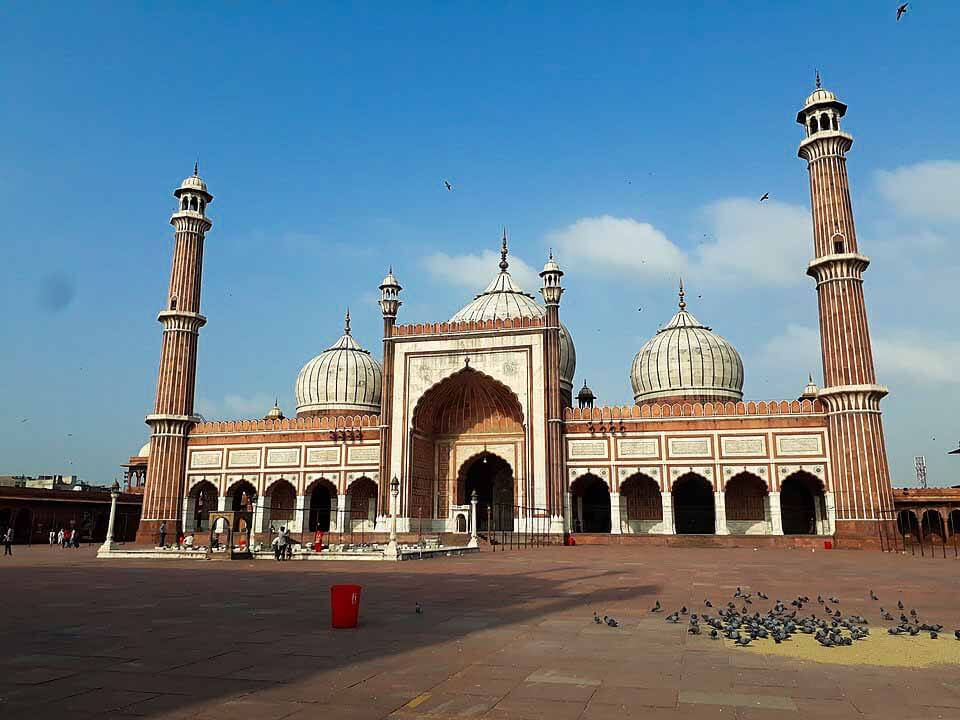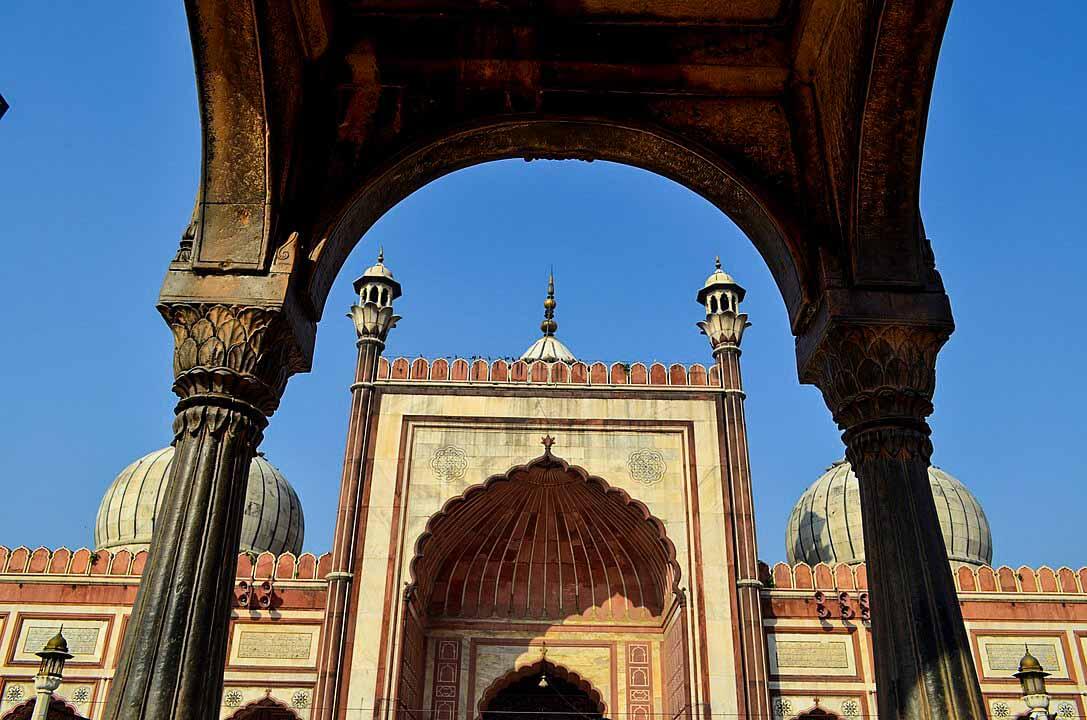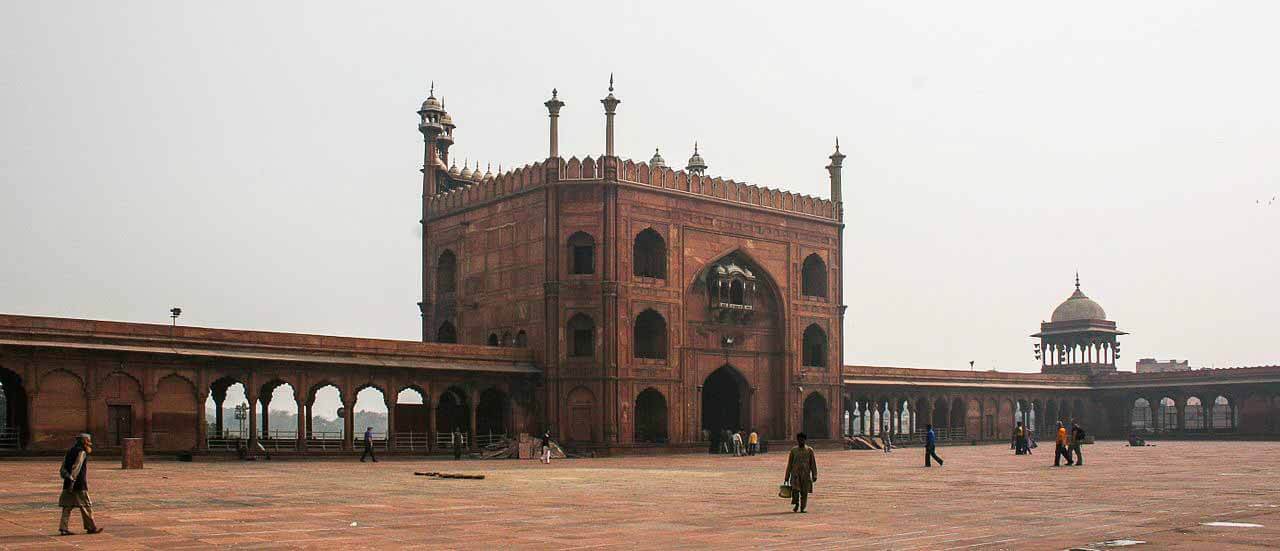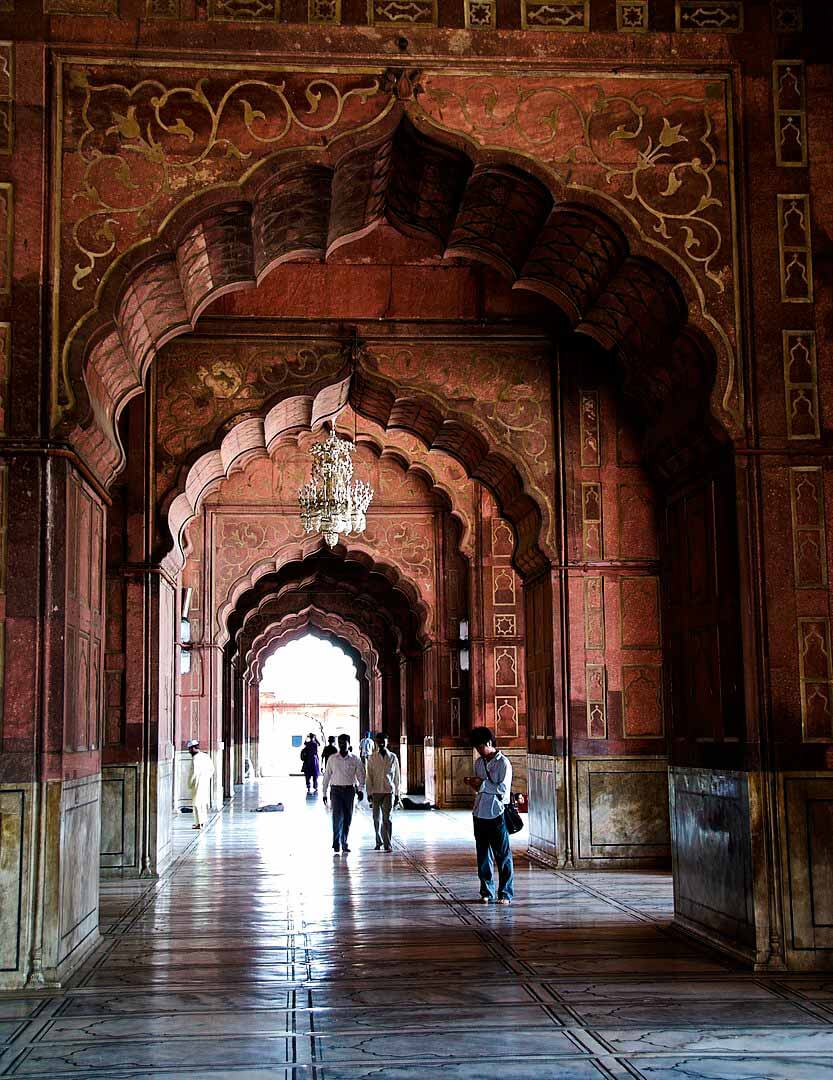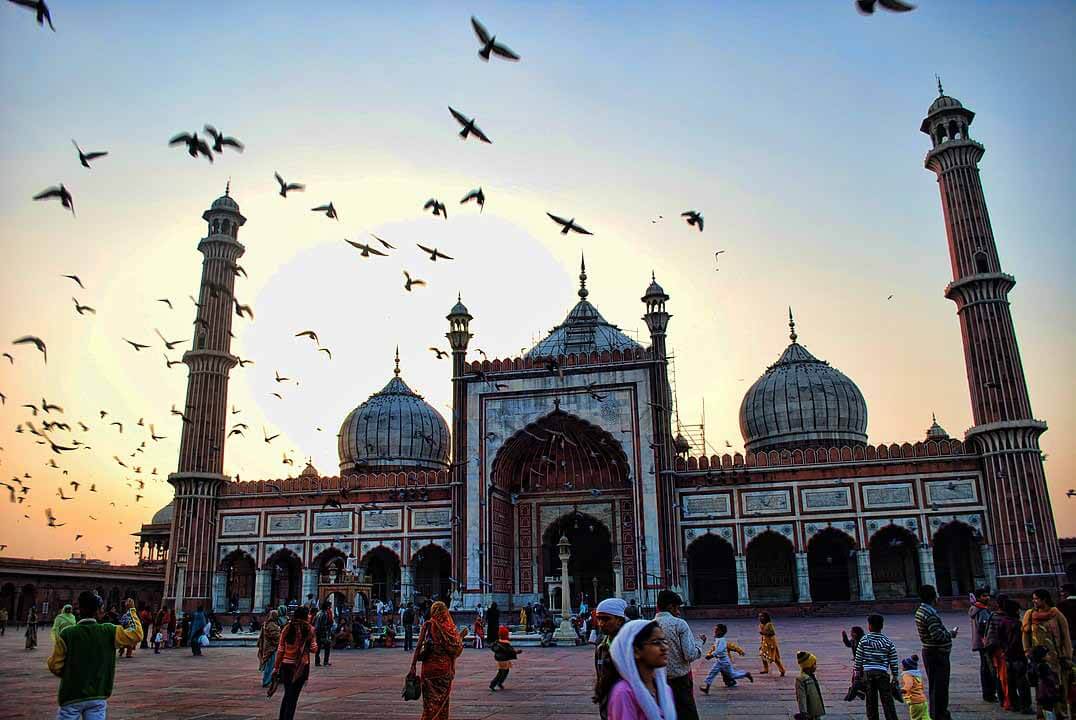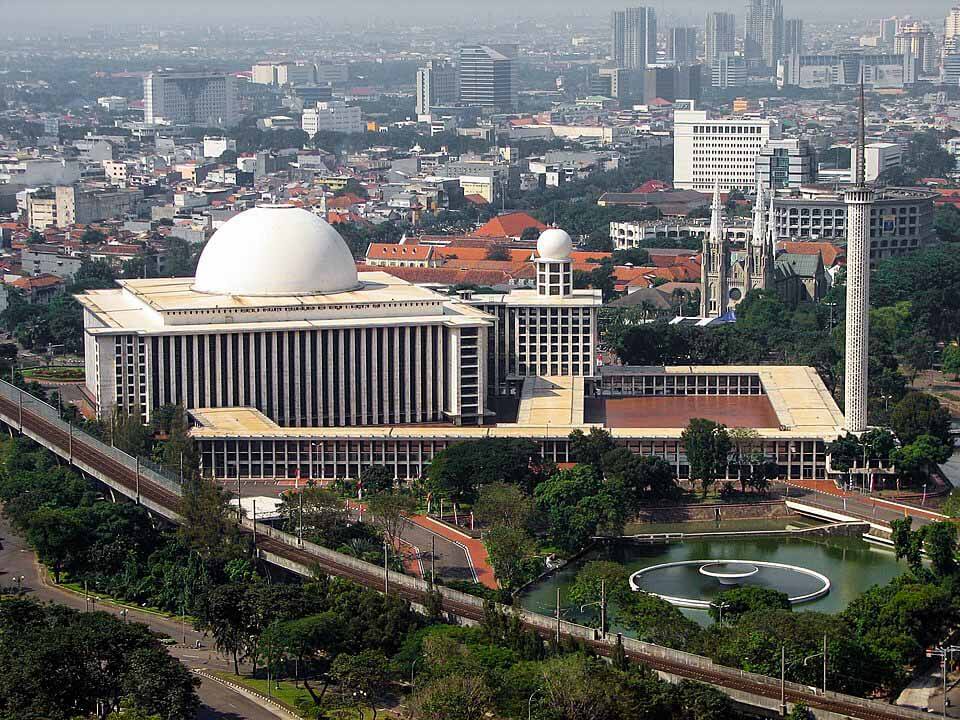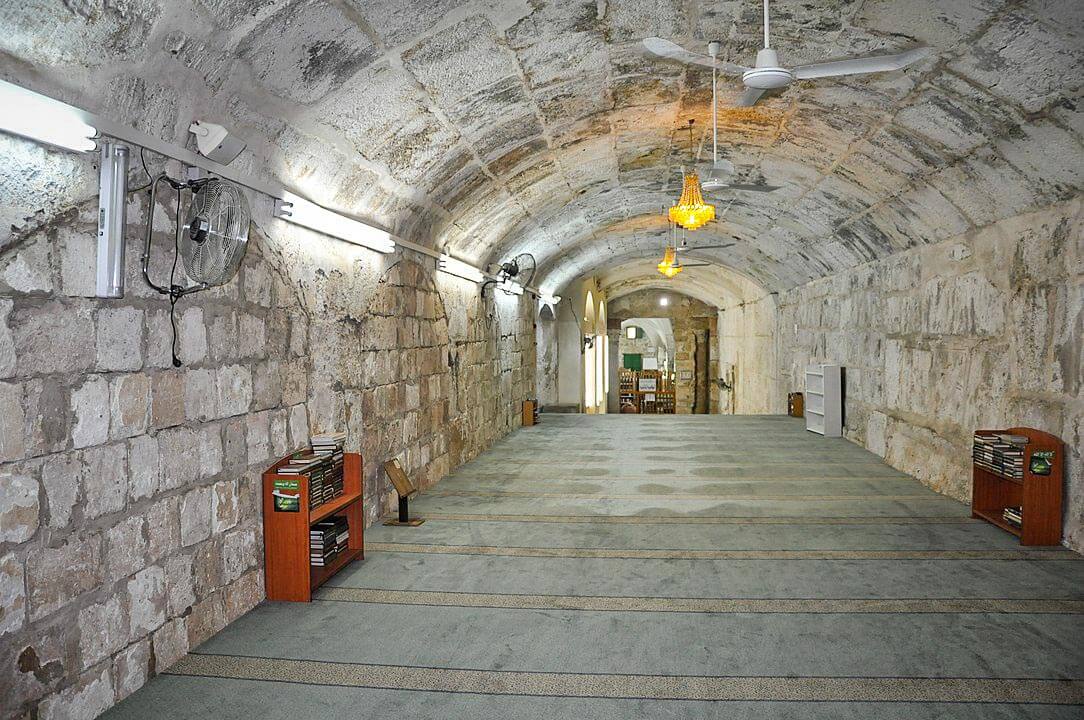Old Delhi, India
Coordinates: 28.650830, 77.233060
The Masjid-i Jehan Numa, commonly known as the Jama Masjid of Delhi, is one of the largest mosques in India.
It was built by the Mughal Emperor Shah Jahan between 1650 and 1656 at a cost of one million rupees, and was inaugurated by Imam Syed Abdul Ghafoor Shah Bukhari from Bukhara, present-day Uzbekistan.
The mosque was completed in 1656 AD with three great gates and two 40 metres high minarets constructed with strips of red sandstone and white marble.
The courtyard can accommodate more than 25000 people.
There are three domes on the terrace which are surrounded by the two minarets. On the floor, a total of 899 black borders are marked for worshippers.
The architectural plan of Badshahi Masjid, built by Shah Jahan’s son Aurangzeb at Lahore, Pakistan, is similar to the Jama Masjid.
The Majestic Mosque for Indian Muslims is considered as the “National Mosque of India” respectively.
History
Mughal Emperor Shah Jahan built the Jama Masjid between 1650 and 1656. It was constructed by more than 5000 workers. It was originally called ‘Masjid e Jahan Numa’, meaning ‘mosque commanding the view of the world.
The construction was done under the supervision of Saadullah Khan, wazir (or prime minister) during Shah Jahan’s reign.
Shah Jahan also built the Taj Mahal, at Agra and the Red Fort in Old Delhi, which stands opposite the Jama Masjid.
After the British victory in the Revolt of 1857, they confiscated the mosque and stationed their soldiers there. They also wanted to destroy the mosque as an act of punishment to the city. But due to opposition faced, the demolition was not done.
The iconic mosque is one of the last monuments built under Mughal Emperor Shah Jahan. After the construction of the monument in 1656, it remained the royal mosque of the emperors until the end of the Mughal period.
During 1948, the last Nizam of Hyderabad, Asaf Jah VII was asked for a donation of ₹75,000 to repair one-fourth of the mosque floor. The Nizam instead sanctioned ₹3 lakh, stating that the remaining three-fourths of the mosque should not look old.
Know This
Easy to reach if you travel by metro. There is a metro station Jama Masjid. From the station you walk less than 10 minutes to the mosque. And you reach the impressive mosque from the site you can overview the building
After climbing the steps to this mosque, shoes must be removed & ladies must enter separately & wear a special covering. Inside you are free to wander around the worshippers square but can not enter the prayer hall




